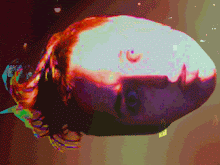Expression of personal self through clothing
Whisper
Similarly, Whisper, [http://whisper.surrey.sfu.ca/index2.html] another large collaborative project headed by Vancouver-based media artists Thecla Schiphorst and Susan Kozel (and involving numerous other artists, designers, computer scientists, and hardware/software engineers) uses skin as the metaphor for the boundary between external and internal relations, bringing the activity contained within individual bodies out into a shared domain. Whisper is a set of networked garments that track physiological data such as heart rate, galvanic skin response, and breathing patterns. Biometric sensors are embedded in the garments, and these trigger different visual and auditory display patterns - both on the clothing (via LEDs embedded in the sleeve, for example), and throughout the environment (via video projection and audio speakers). Individuals wearing the Whisper garments can decide what data to share, and with whom. Like TGarden, the Whisper project creates a liminal area of activity within which participants can focus on their incoming bodily sensations. It also serves as a testing ground for modes of interaction with the potential to integrate emotive and intimate elements into the network communications of the future.
Medulla Intimata
Whereas TGarden and Whisper construct installation environments within which particular garments function, other artists choose to work with the syntax of everyday activity in its natural setting. In Medulla Intimata, [www.thisisclutch.com/medulla.html] a project by Tina Gonsalves and Tom Donaldson, galvanic skin response drives a small video screen embedded in a piece of jewelry. Designed to look like "normal" jewelry, the project consists of a deliberately ostentatious necklace. The video display consists of the wearer's image - but, depending on the affective input of the wearer (biometric measurements of their emotional state, or the dynamics or tone of their conversations), the video doppelganger expresses contradictory or unintentionally revealing emotions. The uncontrollability of this alter-ego highlights the dual nature of one's public persona and private emotions, creating an accessory which disrupts conditioned ways of presenting the self. The artists refer to Medulla Intimata as both a "foil" to the wearer and, perhaps most tellingly, a "wound" - for its expression of the way repressed and hidden emotions can leak into the managed world of "polite" conversation, creating undercurrents of unspoken thoughts and accusations. In most cases, wearable computing applications attempt to assist the individual in covering such lapses. Medulla Intimata posits instead that these small, everyday deceptions might be propelled toward a forced reckoning by a fashion accessory. Ultimately, the artists are asking whether a greater control over, or ability to manage, perceptions is indeed better in the end.



0 Comments:
Post a Comment
<< Home